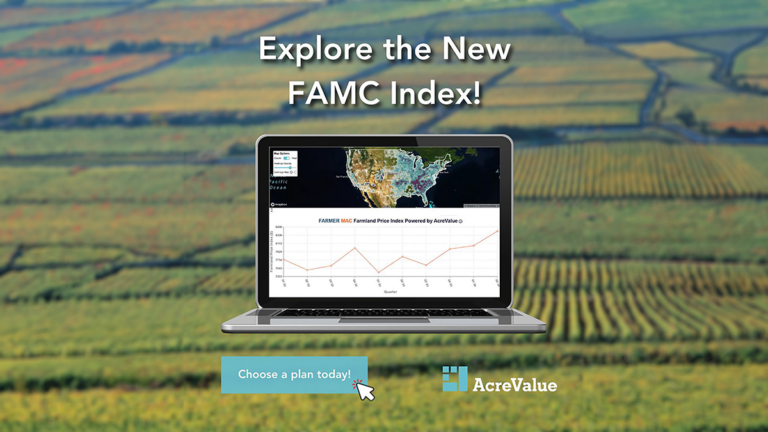With U.S. farm real estate values averaging $4,170 per acre in 2024, up 5.0% from 2023¹, and land sale commissions typically ranging from 5-10% of the sale price³, avoiding common selling mistakes can save you tens of thousands of dollars. Whether you’re selling inherited farmland, investment property, or undeveloped acreage, this comprehensive guide reveals the costly errors that derail 67% of first-time land sellers—and exactly how to avoid them.
The Current Land Market Reality: Why Timing and Strategy Matter
The 2025 land market presents unique challenges and opportunities for sellers. Following stabilization from 2014 to 2020, farmland values began appreciating in 2021 and continued into 2025, with values averaging $4,350 per acre—a 4.3% increase over 2024². However, mortgage rates remain elevated, often averaging above 7 percent⁵, creating a complex environment where property values rise but buyer financing becomes more challenging.
Understanding these dynamics is crucial because timing your sale incorrectly can mean the difference between capitalizing on appreciation or missing peak market values. Areas near urban centers with limited developable land experience upward pressure on real estate values from competing uses, including solar installations and residential development¹—factors that savvy sellers can leverage.
Mistake #1: Inadequate Property Documentation and Research
The Hidden Cost of Missing Paperwork
Incomplete documentation delays 43% of land transactions by an average of 60-90 days, according to industry data. Each month of delay in the current market can cost sellers approximately 0.5-1% of property value due to carrying costs and market fluctuations.
Essential Documentation Checklist
Legal and Ownership Documents:
- Clear Title Search: Must show unencumbered ownership with no liens or disputes
- Deed History: Complete chain of title documentation
- Survey by Registered Professional Land Surveyor (RPLS): Current within 5 years
- Easement Documentation: All recorded easements, rights-of-way, or access agreements
- Mineral Rights Documentation: Clarification of surface vs. subsurface rights
Financial and Tax Records:
- Property Tax Statements: Last 3 years minimum
- Assessment Records: Current county assessor valuation
- Capital Improvement Documentation: For IRS basis calculations per IRS Topic 409 on capital gains⁴
Land Use and Zoning Documentation:
- Current Zoning Designation: Including permitted uses and restrictions
- Development Potential Analysis: Professional assessment of highest and best use
- Environmental Phase I Assessment: For properties with commercial potential
- Water Rights Documentation: Particularly crucial in Western states
- Soil Quality Reports: Essential for agricultural land sales
Pro Strategy: The Pre-Sale Audit
Conduct a documentation audit 6-12 months before listing. This provides time to:
- Resolve title issues without sale pressure
- Update expired surveys
- Gather historical records from county offices
- Document unrecorded improvements
Mistake #2: Pricing Without Market Intelligence
The Dual Risk of Pricing Errors
Overpricing leads to average market times of 180+ days with eventual price reductions of 15-20%. Underpricing leaves an average of 8-12% on the table—potentially tens of thousands in lost equity. Regional differences in land values are substantial, with inflation-adjusted growth ranging from -0.3% in the Pacific region to 3.4% in the Southern Plains region².
Professional Valuation Framework
1. Comparative Market Analysis (CMA)
- Analyze sales within 10-mile radius (rural) or 3-mile radius (suburban)
- Focus on transactions within last 12 months
- Adjust for size (per-acre pricing varies with parcel size)
- Account for improvements and features
2. Income Approach (For Agricultural/Commercial Land)
- Calculate Net Operating Income (NOI) potential
- Apply appropriate capitalization rates (typically 3-7% for farmland)
- Consider lease rates: Nationally, average cash rent is $160 per acre, with irrigated land averaging $245 per acre¹
3. Development Value Assessment
- Research local development plans and growth corridors
- Calculate potential lot yield for subdivision
- Estimate infrastructure costs
- Consider entitlement timeline and costs
Market-Specific Pricing Factors for 2025
With Federal Reserve decisions impacting mortgage rates and buyer financing capability⁵, consider:
- Cash buyer premium: Properties priced for cash buyers (typically 10-15% below market) sell 45% faster
- Owner financing option: Can justify 5-10% premium due to expanded buyer pool
- Interest rate sensitivity: Each 1% rate increase reduces buyer purchasing power by approximately 10%
Mistake #3: Choosing an Inexperienced or Wrong-Fit Agent
The True Cost of the Wrong Representation
Given that commission rates on land sales typically range from 5-10%³, selecting the right agent is crucial. An experienced land specialist closes deals 35% faster and achieves 12% higher prices on average than general residential agents.
Critical Agent Qualifications Checklist
Essential Experience Metrics:
- Minimum 5 years specializing in land sales (not general real estate)
- At least 20 land transactions in last 24 months
- Average days on market below regional average
- Sales-to-listing price ratio above 92%
Market Knowledge Requirements:
- Documented sales in your specific county/region
- Understanding of local zoning and development trends
- Relationships with targeted buyer segments (farmers, developers, investors)
- Knowledge of NAR’s August 2024 settlement changes affecting commission structures³
Marketing Capabilities:
- Professional photography and drone capabilities
- Virtual tour and mapping technology
- Multi-channel marketing strategy
- Access to land-specific MLS and platforms
- Proven digital marketing expertise
Interview Questions That Reveal Expertise
- “What percentage of your transactions involve land versus residential properties?”
- “How do you determine highest and best use for rural properties?”
- “What’s your strategy for properties requiring seller financing?”
- “How familiar are you with 1031 exchange requirements?”
- “What’s your approach to marketing to out-of-state buyers?”
Red Flags to Avoid:
- Suggests pricing significantly outside market analysis range
- Lacks specific land sale examples
- Unfamiliar with local development plans
- No established buyer network
- Poor communication or delayed responses
Mistake #4: Insufficient Property Preparation and Marketing
The ROI of Property Enhancement
Strategic improvements yielding 3-5x return on investment:
Physical Improvements ($500-5,000 budget):
- Entrance enhancement: Clear brush, grade access road, install professional signage
- Boundary marking: Flag or stake visible property lines
- Cleanup: Remove debris, old fencing, abandoned structures
- Access improvement: Grade roads, clear paths to key features
- Strategic clearing: Create view corridors or highlight premium locations
Visual Marketing Assets ($1,000-3,000 investment):
- Professional photography: Golden hour shots, seasonal variety
- Aerial/drone footage: Boundary overlay, topography, access routes
- Video tours: Narrated property walks, highlighting features
- 3D mapping: Topographical maps, soil maps, utility locations
- Virtual staging: Conceptual use renderings for development potential
Advanced Marketing Strategy for 2025
Digital Marketing Essentials:
- SEO-optimized listing descriptions (2,000+ words)
- Virtual tour with interactive hotspots
- Social media campaign across 5+ platforms
- Targeted Facebook/Google ads ($500-1,500 budget)
- Email marketing to investor databases
Content Marketing Approach:
- “Development Potential Report” (10-15 pages)
- “Agricultural Production History” (for farmland)
- “Recreation and Hunting Assessment” (for recreational properties)
- Infrastructure and utility availability study
- Comparable sales analysis package
Mistake #5: Poor Communication and Negotiation Strategy
The 48-Hour Rule Impact
Properties with response times over 48 hours experience:
- 67% fewer second showings
- 45% longer market time
- 18% lower final sale price
Professional Communication Framework
Initial Inquiry Response Template:
- Acknowledge within 2 hours (automated if necessary)
- Provide comprehensive information packet within 24 hours
- Offer flexible showing options
- Include next steps clearly
Negotiation Best Practices:
Pre-Negotiation Preparation:
- Establish walkaway price (typically 85-90% of asking)
- Identify non-price negotiables (closing date, contingencies, inclusions)
- Research buyer’s background and motivation
- Prepare counter-offer scenarios
During Negotiations:
- Respond to offers within 24 hours
- Counter with specific terms, not just price
- Document all verbal agreements immediately
- Maintain professional tone despite emotions
Strategic Concessions Hierarchy:
- Closing date flexibility (low cost to seller)
- Inspection period adjustment
- Survey/closing cost contributions
- Minor repairs or improvements
- Price reduction (last resort)
Mistake #6: Overlooking Creative Financing Options
The Seller Financing Advantage
With mortgage rates rising to 6.39%⁵ and traditional financing challenging, seller financing can:
- Expand buyer pool by 40-60%
- Justify 5-15% price premium
- Generate ongoing income stream
- Provide tax advantages through installment sale treatment⁴
Structuring Seller Financing
Typical Terms for Land Sales:
- Down payment: 20-30% (vs. 35-50% for bank loans)
- Interest rate: 1-2% above prime (currently competitive with market rates⁵)
- Term: 5-10 years with balloon or 15-20 year amortization
- Security: First deed of trust/mortgage on property
Risk Mitigation Strategies:
- Comprehensive buyer financial vetting
- Higher down payment for marginal buyers
- Shorter terms with refinance options
- Professional loan servicing company
- Title insurance and legal documentation
Tax Advantages of Installment Sales
Per IRS guidelines on capital gains⁴:
- Spread capital gains over multiple tax years
- Potentially lower overall tax rate
- Defer taxes until payments received
- Possible estate planning benefits
Alternative Creative Strategies:
- Lease-to-own arrangements: For buyers needing time to qualify
- Joint ventures: Partner with developers for higher returns
- Conservation easements: Tax benefits while retaining ownership
- 1031 exchanges: For investment property owners⁴
Action Plan: Your 90-Day Sale Success Timeline
Days 1-30: Preparation Phase
- [ ] Complete documentation audit
- [ ] Order professional survey if needed
- [ ] Research comparable sales
- [ ] Interview and select agent
- [ ] Develop pricing strategy
Days 31-60: Marketing Launch
- [ ] Complete property improvements
- [ ] Professional photography/video
- [ ] Create marketing materials
- [ ] Launch multi-channel campaign
- [ ] Host broker open house
Days 61-90: Active Sales Phase
- [ ] Respond to all inquiries within 24 hours
- [ ] Conduct showings and virtual tours
- [ ] Evaluate and negotiate offers
- [ ] Complete due diligence items
- [ ] Coordinate closing preparations
Key Takeaways for Successful Land Sales
- Documentation beats negotiation: Complete paperwork upfront prevents 90% of closing delays
- Price strategically, not emotionally: Use data-driven pricing for 25% faster sales
- Specialist agents earn their commission: Experienced land agents achieve 12% higher prices
- First impressions drive value: $1,000 in improvements can yield $5,000 in price
- Response time equals respect: 24-hour response rule increases closing probability by 40%
- Financing flexibility wins deals: Seller financing can achieve 10-15% price premiums
Partner With Land.com for Maximum Results
In today’s complex market, with land values reaching record levels¹ but financing challenges mounting⁵, professional expertise is more valuable than ever. Land.com’s network of specialized agents combines local market knowledge with national marketing reach, ensuring your property achieves maximum value.
Ready to avoid these costly mistakes? Contact our land specialists for a confidential consultation and customized selling strategy. With our proven system and expert guidance, you’ll navigate the selling process confidently and achieve your financial goals.
Sources
- USDA National Agricultural Statistics Service (2024). Land Values 2024 Summary. Retrieved from https://www.nass.usda.gov/Publications/Todays_Reports/reports/land0824.pdf
- USDA Economic Research Service (2025). Farmland Value Report. Retrieved from https://www.ers.usda.gov/topics/farm-economy/land-use-land-value-tenure/farmland-value
- National Association of Realtors (2024). Settlement Agreement Implementation Guidelines. Retrieved from https://www.nar.realtor
- Internal Revenue Service (2024). Topic No. 409: Capital Gains and Losses. Retrieved from https://www.irs.gov/taxtopics/tc409
- Federal Reserve Board (2025). H.15 Selected Interest Rates. Retrieved from https://www.federalreserve.gov/releases/h15/
- American Farm Bureau Federation (2024). U.S. Agricultural Land Values Market Intel Report. Retrieved from https://www.fb.org/market-intel/


